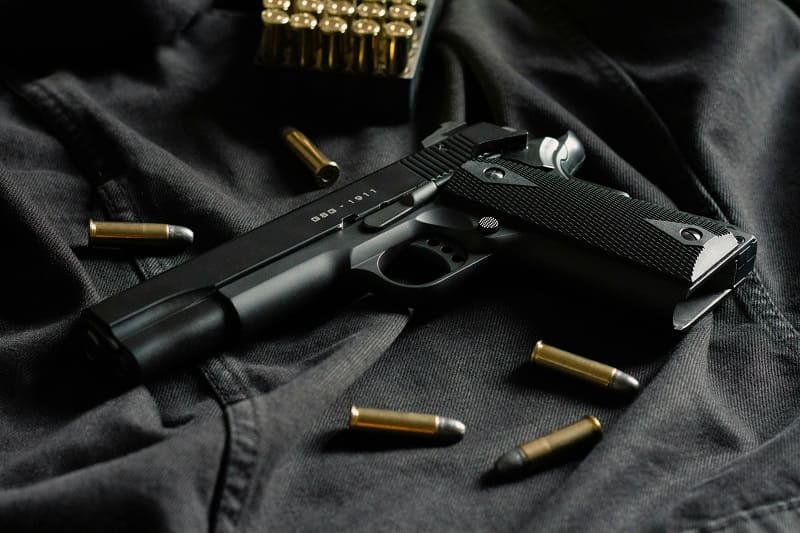The history mentioned in the “Amici Curiae Brief of The States of Arizona, Missouri, And 21 Other States” for the Supreme Court case of New York State Rifle & Pistol Association v. Keith M. Corlett cites developments in the United States concerning the carrying of self-defense handguns in public over the past five decades. For a detailed illustration of this expansion, refer to http://www.gun-nuttery.com/rtc.php.
Click here for the 2011 Version.
1976 to 1986: Initiation
The modern era of licensed carry in the United States began with Georgia in 1976, under the initiative of the state’s lieutenant governor, Zell Miller. Inspired by an NRA director and former border patrolman named Ed Topmiller, Georgia’s law established a model for subsequent legislation. Central to this law was the assignment of the shall-issue permit process to elected officials rather than law enforcement.
Georgia joined a few other states permitting handgun carrying, including Vermont, where no license was ever required; New Hampshire, with a law dating back to 1923; Washington, which almost mandated issuance in 1961; and Connecticut, which established a Handgun Review Board in 1969 to prevent arbitrary denials.
The Indiana Sportsmen’s Council, with NRA-ILA assistance, achieved a mandatory issuance law in 1980 but had to litigate against state agencies and elected officials for compliance.
This trend continued with Indiana in 1980, followed by Maine and North Dakota in 1985, and South Dakota in 1986.

1987 to 1988: Florida and Media Attention
Media attention to handgun carry surged in 1987 when Marion Hammer championed Florida’s cause. Despite concerns from anti-gun groups predicting increased violence, Florida’s Unified Sportsmen succeeded in passing the law. Contrary to predictions, the law’s implementation did not lead to the anticipated problems.
1989 to 1998: CHL Spreads Across the Nation
Florida’s success paved the way for other states. License laws rapidly spread, with Oregon, Pennsylvania, and West Virginia passing laws in 1989. The trend continued, encompassing states like Idaho, Mississippi, Montana, and Arizona by 1994. Subsequent years saw additional states such as Arkansas, North Carolina, Oklahoma, Texas, and Virginia adopting similar legislation.
1999 to 2001: Columbine Tragedy Halts Progress
In 1999, progress on licensed carry faced setbacks following the tragic events at Columbine High School. Despite several states considering such legislation, the aftermath of the incident delayed further developments.
2002 to 2007: Resuming Momentum
In 2002, New Mexico passed the first licensed carry bill post-Columbine, though it faced legal challenges. Subsequent years saw states like Colorado, Minnesota, and Missouri passing shall-issue laws. Despite obstacles, progress continued, with Alaska, Iowa, and Wisconsin making strides toward facilitating licensed carry.
2008 to 2011: Legal Milestones
The U.S. Supreme Court’s landmark decisions in District of Columbia v. Heller (2008) and McDonald v. Chicago (2009) affirmed the individual right to bear arms. Congress also enacted legislation expanding concealed carry in national parks and allowing firearms on Amtrak trains. Several states, including Arizona, Wyoming, and Wisconsin, passed significant laws furthering the cause of licensed carry.
2012: Sandy Hook Tragedy and School Faculty Carry
The Sandy Hook Elementary School shooting in 2012 reignited the debate over gun control. While some states tightened restrictions, others reconsidered policies regarding armed personnel in schools. This period witnessed both legislative action and public debate on the issue.
2013: Final Strides
The 7th U.S. Circuit Court of Appeals ruled against Illinois’ ban on licensed carry in December 2012. Subsequently, Illinois passed a shall-issue carry law, marking a significant milestone. Other developments included legal victories challenging restrictive carry laws in California and the District of Columbia.
2014-2021: Expansion of No-License Carry
Several states passed laws allowing no-license carry between 2014 and 2021. These measures, aimed at further expanding firearm rights, contributed to a broader nationwide debate on gun regulations.
Looking Ahead to 2022
The impending Supreme Court case, New York State Rifle & Pistol Association v. Keith M. Corlett, raises questions about the constitutionality of restrictive carry requirements. A favorable ruling could impact several states with discretionary-issue carry laws, potentially shaping the future landscape of firearm regulations across the nation.
Written by Larry Arnold, Texas Handgun Association Legislative Director, [email protected]
